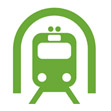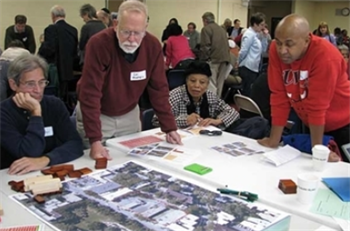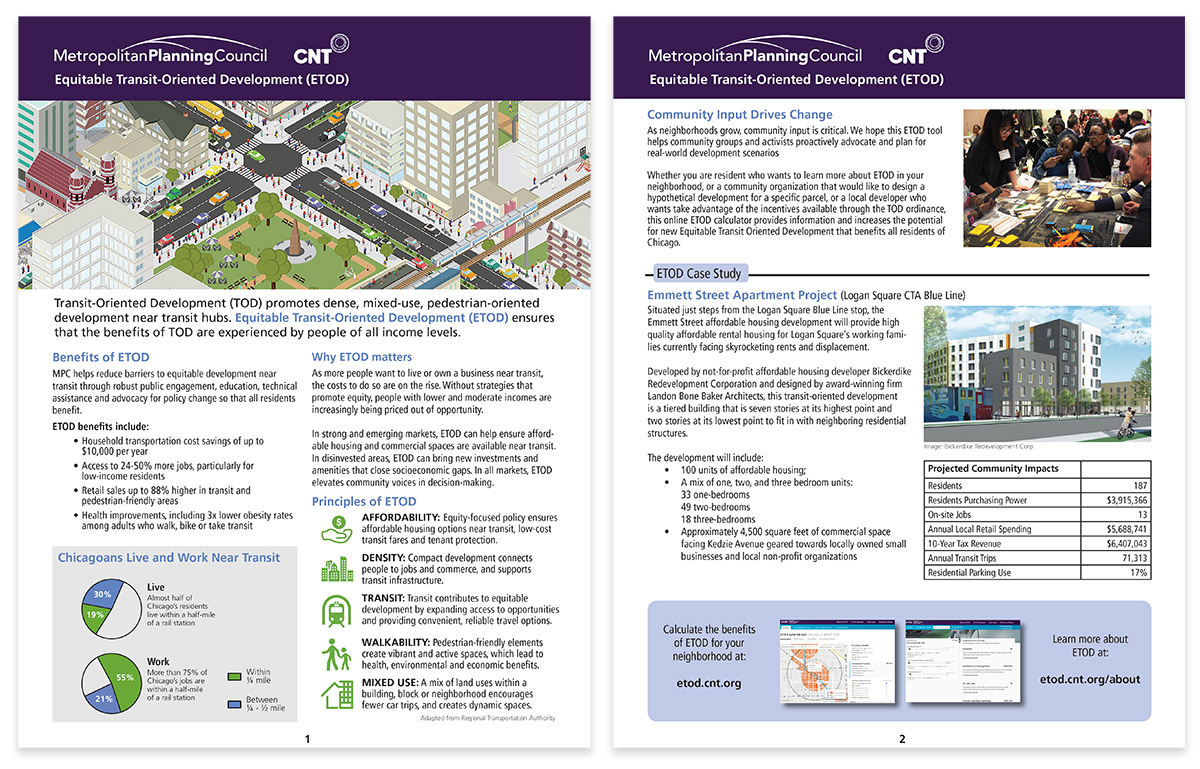What is ETOD?
Equitable transit-oriented development (ETOD) works to ensure that people of all incomes experience the benefits of dense, mixed-use, pedestrian-oriented development near train and bus stops.
Why ETOD matters
Public transit should be an amenity for everyone. With traditional transit-oriented development, as more people want to live or own a business near transit, the costs to do so rise. Without strategies that promote and preserve property affordability, people with lower and moderate incomes are increasingly being priced out of the opportunity to live near transit or their communities are not considered for development. Due to the racial wealth gap, typically Black and Brown communities are most negatively impacted.
ETOD matters because access to consistent and reliable transit systems connect people to opportunities that improve their lives. ETOD is a crucial part of making communities work for everyone.
For example, research from Harvard University shows that how easily a person can get to work is the strongest factor in determining whether a person escapes the cycle of poverty (Chetty 2014).
In neighborhoods with high or rising property values and increased development activity, ETOD can encourage or require affordable housing and commercial space development near transit. In neighborhoods with low property values and little to no development activity, ETOD practices can encourage new investments and amenities that close socioeconomic gaps and improve walkability and access to transit. In all neighborhoods, ETOD practices elevate and center community voices in decision-making.

Principles of ETOD
 AFFORDABILITY: Equity-focused policy ensures affordable housing options near transit, low-cost transit fares and tenant protection.
AFFORDABILITY: Equity-focused policy ensures affordable housing options near transit, low-cost transit fares and tenant protection. Density: Compact development connects people to jobs and commerce, and supports transit infrastructure.
Density: Compact development connects people to jobs and commerce, and supports transit infrastructure. Transit: Transit contributes to equitable development by expanding access to opportunities and providing convenient, reliable transportation services.
Transit: Transit contributes to equitable development by expanding access to opportunities and providing convenient, reliable transportation services. WALKABILTY: Pedestrian-friendly elements create vibrant and active spaces, which lead to health, environmental and economic benefits.
WALKABILTY: Pedestrian-friendly elements create vibrant and active spaces, which lead to health, environmental and economic benefits. MIXED-USE: A mix of land uses within a building, block or neighborhood encourages fewer car trips and creates dynamic spaces.
MIXED-USE: A mix of land uses within a building, block or neighborhood encourages fewer car trips and creates dynamic spaces.
Adapted from Regional Transportation Authority
Benefits of ETOD
- Household transportation cost savings of up to $10,000 per year
- Access to 24-50% more jobs, particularly for low-income residents
- Retail sales up to 88% higher in transit and pedestrian-friendly areas
- Health improvements, including 3x lower obesity rates among adults who walk, bike or take transit
- Household transportation emissions up to 78% lower in communities near transit
- Up to 40% higher property values for homes near rapid transit
Community Input Drives Change

Community input and participation must be central to the growth and evolution of neighborhoods. This ETOD tool provides community groups and activists with information to proactively advocate and plan for or respond to real-world development scenarios.
Whether you are a resident who wants to learn more about ETOD benefits and possibilities in your neighborhood, a community organization interested in designing a hypothetical development for a specific parcel, or a local developer who wants take advantage of the incentives available through the City of Chicago’s TOD ordinance, this online ETOD calculator increases the potential for new Equitable Transit Oriented Development that benefits all residents of Chicago.
Going to an external meeting? Visual learner? Start here!
This attractive, two-page primer introduces the basics of ETOD in Chicagoland.





